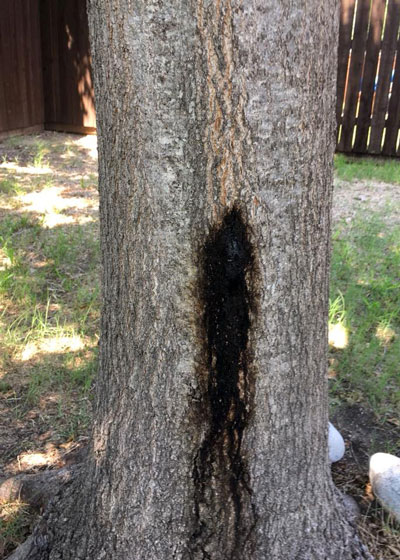Question of the Week: June 7, 2018
“What is causing this black ooze on the trunk of my tree, and what can I do to stop it?”

Blackened bark causes concern for gardeners.
I get this question several times a month. It seems like it’s been more common even than that in recent weeks.
The causes may vary a bit, but the blackened moisture usually tells us there is active decay in the trunk. As the wood decays, a stew-mix of moisture from rains combined with sap from the tree starts to seep down the trunk.
Usually you can find the original cause of the problem by searching up and down the trunk within or just above the blackened tissues. It’s often a small twig or branch that either was broken and left in place without pruning, or it was pruned and removed with a stub being left after the cut. This is why we always caution that cuts should be made flush with the trunk or branch, so that new bark can form across and heal the wound, no matter how small.
In this case, if you look at trunk very closely you’ll see a small notch very near the top of the blackened area. That’s probably where a small twig was growing originally. It may have been pruned off with a stub left there to begin the decay. When that happens the decay extends down within the wood of the trunk, and it often extends up into tissues above the stub as well.
At this point with this tree, this gardener might be well advised to contact a certified arborist to look at the tree on site. This is not the time for an amateur arborist to start cutting into the tree trunk exploring on his or her own.
That arborist will also consider things such as any type of bacterial infection that could have caused excessive pressures within the vascular tissues resulting in a condition known as wet wood.
